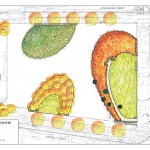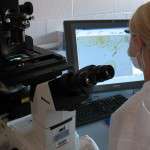
From classic V-2 rockets to winged shuttles, human transport from Earth to beyond is light years ahead of where it once was. And with the Boston Museum of Science premiering a new planetarium show on reaching for the stars, Bostonians have no excuse not to get roused over rockets.
“The engineering process requires incredible precision, especially when building spacecraft,” stated a Nov. 24 Museum of Science press release for the planetarium show, “From Dream to Discovery: Inside NASA Engineering.” “Even tiny particles like a single eyelash can damage the delicate instruments, threatening the success of an entire mission.”
With this imperative precision comes proper planning both on Earth and in space. Part of that responsibility falls on three newly arrived astronauts on the International Space Station. Terry Virts of NASA, Anton Shkaplerov of the Russian Federal Space Agency and Samantha Cristoforetti of the European Space Agency will spend the next six months in orbit clearing the way for the next step: a fleet of U.S.-based “space taxis” due to arrive at the station in 2017.
“More than anything else, I think it’s a political move to keep human space life active as well as an international venture,” said Andrew West, assistant professor of astronomy at Boston University. “We just need to shoot someone up into orbit … We’ve had the technology to do that since the 1960s.”
Since the end of NASA’s Space Shuttle program in 2011, Russia’s “Soyuz” capsules have been the only way for astronauts and cosmonauts to travel to and from the ISS. In September, NASA announced that private firms Boeing and SpaceX won a bid to design the space taxis that will enable the United States to once again send astronauts and supplies to the ISS from American soil.
The new crafts will face the same problems scientists have always had, though. West said modern-day modeling still accounts for the same space environment factors, starting with gravity.
“The real expense is mass,” West said. “So you want to make them as light as possible.”
Due to the short length of the six-hour flight between Earth and the ISS, West said mass might not dominate the focus of engineers at Boeing and SpaceX.
Instead, spacecraft design, including that of the new American space taxis, must focus on taking into account extreme temperatures outside of the Earth’s atmosphere, said Theodore Fritz, professor of astronomy at BU.
“Temperature is a very difficult thing to come to grips with,” Fritz said. “On the one hand, your spacecraft is seeing a black sky at 50 degrees Kelvin.”
That’s negative 370 degrees Fahrenheit. In other words, it’s very, very cold.
“On the other hand, if it’s in orbit around the Earth, you’re seeing the Sun, which is pumping 1300 Watts per square meter out,” he added.
Fritz and West said designs for manned spacecraft have not changed much since the Apollo missions fifty years ago. The space taxis’ designs might not be drastically different because, after all, their jobs aren’t.
“A manned vehicle is kind of fixed,” Fritz said. “A human being is a certain size, and you need to accommodate that size.”
However, as cosmic destinations become more ambitious, craft design will inevitably have to adjust. West said a manned mission to Mars is likely to be humankind’s next step in space exploration — a costly but technologically possible feat. NASA is already planning a Thursday test launch of its Orion capsule, the same spacecraft it plans to send to Mars by 2035.
“Going to Mars is certainly something that pushes our envelope as a species, and there’s definitely scientific gain to be had, especially in terms of understanding if Mars is a place that once sustained life,” West said. “So I think there are some cool questions that human exploration and bringing back rocks can answer.”
But there’s a difference between the six hours to orbit and the nine months to Mars. Unlike missions to the moon or the ISS, a manned spacecraft to Mars would require enough room for astronauts to comfortably live, as well as enough room for storing food, water and oxygen, West said.
Additionally, the craft would need shielding to protect it from the Sun’s radiation, which is much stronger on the other side of Earth’s magnetic field, West said. His proposal is to store water in the walls of the spacecraft.
“It both deals with where you store water and can act like a shield,” West said.
Looking ahead to the future of space exploration, Fritz said that maintaining flow of development is of the upmost importance, and shows like the one at the Museum of Science get people thinking of what’s next.
“What’s really necessary is to maintain a steady progression of programs that view a long-term goal of exploration,” Fritz said. “Not necessarily that you throw hundreds of billions of dollars at it, right in one fell swoop, but you keep working toward that end.”




